Fermenting Beer with Wyeast 2206 Bavarian Lager Yeast
Published: October 3, 2025 at 11:06:09 AM UTC
This review and guide is dedicated to Wyeast 2206 Bavarian Lager Yeast. It's designed for homebrewers aiming to craft clean, malty German-style lagers and hybrid beers. It combines official strain specs with real brewer experiences. This includes common lag times and reliability in home setups.
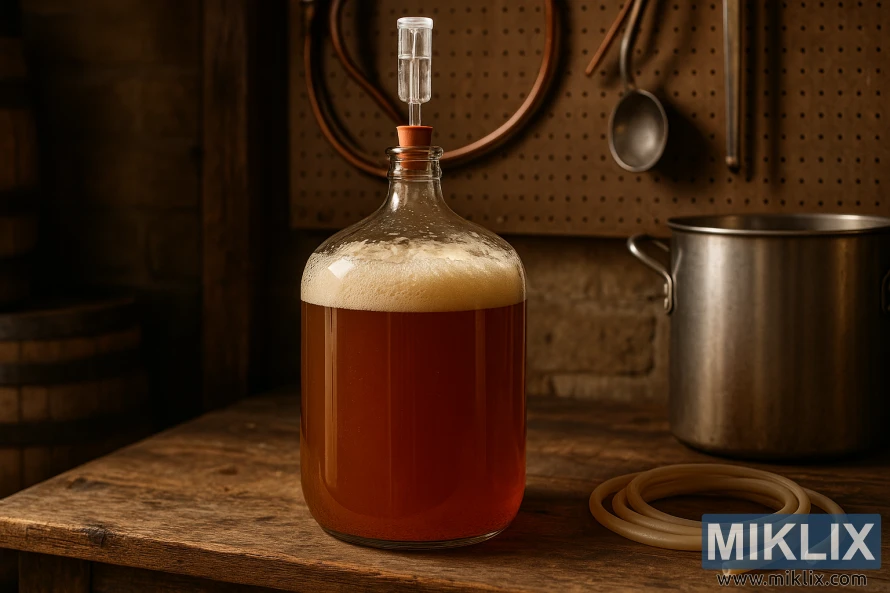
Key Takeaways
- Wyeast 2206 Bavarian Lager Yeast is suited for malty German lagers and hybrids.
- This article is a product review aimed at homebrewers seeking authentic lager character.
- Content blends official specs with brewer reports on lag time and reliability.
- Practical fast lager schedules and temperature control tips are included.
- Expect guidance on pitching, starters, and managing diacetyl rests for clean results.
Overview of Wyeast 2206 Bavarian Lager Yeast
The Wyeast 2206 overview starts with essential brewing metrics. Homebrewers and professional breweries alike rely on these. The strain profile indicates typical attenuation at 73–77%, medium-high flocculation, and a fermentation range of 46–58°F (8–14°C). It also shows an alcohol tolerance around 9% ABV.
Bavarian lager yeast characteristics highlight its popularity for rich, malty lagers. It's ideal for Doppelbock, Eisbock, Maibock, and Helles Bock styles. Munich Dunkel, Oktoberfest/Märzen, Schwarzbier, Rauchbier, and classic Bock recipes also benefit from it.
In terms of flavor, the strain profile emphasizes a full body and strong malt presence. At proper temperatures, yeast-driven esters are kept in check. This allows caramel, toffee, and toasted malts to dominate the beer's flavor.
Fermentation practice is critical with this strain. A thorough diacetyl rest after primary fermentation is recommended. This ensures a clean flavor and minimizes buttery notes often linked to lager yeast activity.
- Typical attenuation: 73–77%
- Flocculation: medium-high
- Temperature range: 46–58°F (8–14°C)
- Alcohol tolerance: ~9% ABV
When planning a batch, consider the Bavarian lager yeast characteristics for malt-forward recipes. The Wyeast 2206 overview sets the stage for expectations of body, clarity, and the importance of controlled lagering for optimal results.
Why choose Wyeast 2206 for homebrew lagers
Homebrewers select Wyeast 2206 for its consistent performance in German-style lagers. It offers reliable attenuation of 73–77% and medium-high flocculation. This aids in achieving clarity without the need for aggressive filtration.
The strain's robust, malt-forward character is ideal for bocks, doppelbocks, and Maibocks. Its ability to tolerate higher-gravity worts up to roughly 9% ABV makes it perfect for rich lagers. These beers require body and depth.
Community feedback highlights Wyeast 2206's clean fermentation when managed correctly. It rarely produces diacetyl with a proper diacetyl rest. This makes it suitable for traditional Märzen, Helles, and darker German lagers where a smooth finish is desired.
Wyeast 2206 ferments at a slower pace due to lower temperatures. This slow, steady fermentation is why it's chosen for those seeking predictability over speed. It's the best yeast for bock in many cellar notes, balancing attenuation, flocculation, and malt emphasis.
- Wyeast 2206 benefits: reliable attenuation, good flocculation, malt-forward profile.
- Bavarian lager yeast uses: bock, doppelbock, Maibock, Märzen, Helles.
- Why choose 2206: handles higher gravity, produces clean beers with proper rest.
Temperature range and fermentation behavior
Wyeast recommends a temperature range of 46–58°F (8–14°C) for primary fermentation. Homebrewers and community reports confirm this range as ideal for this strain.
The fermentation behavior of Wyeast 2206 is characterized by a slow and steady pace. It starts slower than ale yeasts or many dry lager blends. Early on, expect modest airlock activity and krausen build.
Temperatures around 54°F (12°C) can speed up metabolism and shorten the time to reach terminal gravity. On the other hand, temperatures near 48°F (9°C) can result in cleaner flavors but extend conditioning time.
Higher fermentation temperatures increase the risk of off-flavors like sulfur and esters. It's important to maintain a balance when aiming for faster fermentation with 2206. Small temperature adjustments can significantly impact the outcome.
- Typical manufacturer range: 46–58°F (8–14°C).
- Behavior: slow, steady, lager-typical activity.
- Speed trade-off: warmer = faster, cooler = cleaner.
Alcohol tolerance is near 9% ABV, which means high original gravities will extend ferment times. This may require larger starters or stepped oxygenation. Be prepared for longer attenuation times when brewing stronger lagers with this strain.
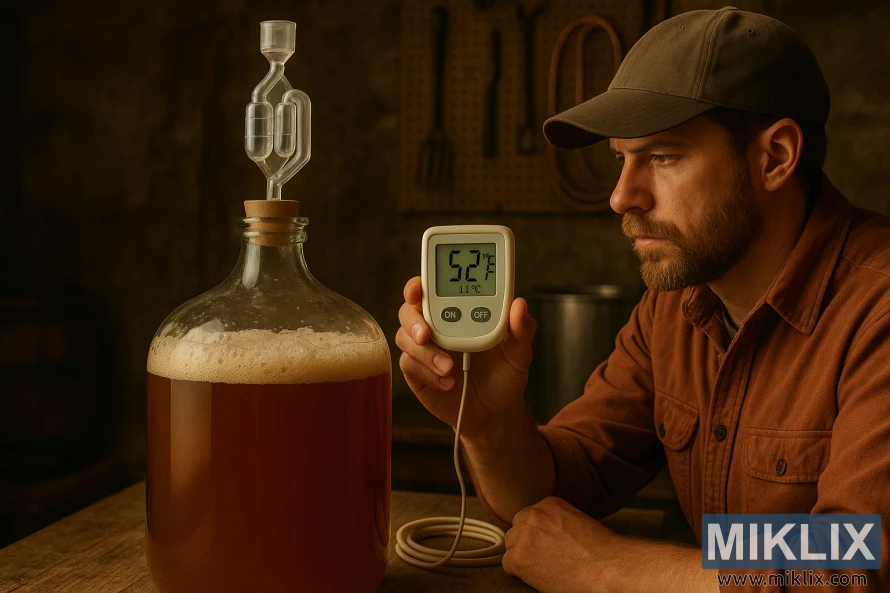
Pitching rates and starter recommendations
Lagers require a robust yeast foundation for clean fermentation. Achieving the correct Wyeast 2206 pitching rate minimizes lag time and reduces diacetyl and sulfur production. For most 5-gallon lagers at average original gravity, focus on a healthy cell count. This approach is more reliable than relying solely on pack count.
Choose a lager starter size that aligns with your beer's gravity. A 1 L starter may be insufficient for beers over 1.050. Brewers suggest using a 1 L starter for lower-OG lagers. For heavier beers, a 2 L or larger starter is recommended to ensure adequate cell count.
Many brewers prefer decanting the starter wort and pitching only the yeast. This method concentrates cells and minimizes dilution in your batch. Harvesting slurry after pitching can yield up to 400 billion cells. These cells can be reused for future batches if stored and handled correctly.
- For 5-gallon lagers at 1.040–1.050: consider a 1.5–2 L starter.
- For 1.050–1.060 and above: plan a 2–3 L starter or step up from a smack pack.
- If using harvested slurry, check viability and build a smaller starter if needed.
Wyeast smack pack starter advice is invaluable for homebrewers unfamiliar with the pouch. Smack packs generally contain fewer cells than a fully built starter. Swirl the pack to activate it, then create a starter to ensure vigor before pitching.
Underpitching can extend lag time and stress fermentation, leading to off-flavors. Overpitching, while less common, can blunt ester formation and affect conditioning. Focus on vitality: ensure proper oxygenation, adequate wort nutrients, and match the lager starter size to the brew's gravity.
Utilize a yeast calculator or cell charts to refine your Wyeast 2206 pitching rate for specific volumes and gravities. Adjust the starter size when working from a single smack pack, harvested slurry, or brewing higher-OG lagers. This ensures tight and predictable fermentation.
Expected lag time and factors that influence it
Lager strains like Wyeast 2206 often exhibit a quiet beginning. The typical lag time for Wyeast 2206 can range from 24 to 72 hours, influenced by various conditions.
The lager lag phase is characterized by a slow, gentle start. Krausen or bubbling signs may appear later than with ale yeasts. At temperatures of 48–50°F, some brewers observe activity around 24 hours. In colder wort, the lag phase can extend up to 72 hours.
- Yeast age and viability: fresher, healthy yeast shortens lag time.
- Pitching rate: adequate cells reduce delay; underpitching extends it.
- Oxygenation: proper oxygen encourages yeast to enter growth phase.
- Starter prep: a strong starter boosts cell count and cuts lag time.
- Wort OG: higher gravity raises stress and lengthens the lag.
- Pitching temperature: pitching too cold slows activation; too warm can speed it but risk off-flavors.
Anecdotal reports provide valuable insights. One brewer pitched at 62°F and saw delayed visible activity, then a rapid fermentation to FG 1.012 in about seven days with a California common (OG 1.052). This example illustrates that slow starts can lead to efficient attenuation once yeast adapt.
During the lager lag phase, look for a non-violent, steady fermentation. A fast, aggressive ferment often signals temperatures that are too warm, potentially leading to unwanted esters or diacetyl. Patience is key to achieving cleaner lager profiles when managing factors affecting fermentation start.
Fermentation schedule: a practical fast lager method
Adopt this fast lager method, backed by modern brewing practices. Monitor specific gravity before each phase. This makes the schedule adaptable to beer strength and yeast health.
- Step 1 — Primary: Cool the wort to 48–53°F (9–12°C). Introduce a decanted Wyeast 2206 starter. Maintain a temperature of 50–55°F (10–13°C). Wait until about 50% of the sugars are consumed. For beers with OG ≤1.060, expect 4–7 days with liquid yeast. Beers with OG ≥1.061 may take 6–10 days with liquid yeast, or 7–14 days with dry strains.
- Step 2 — Ramp up: Once half attenuation is reached, increase the temperature by ~5°F every 12 hours. Aim for 65–68°F (18–20°C). Hold this temperature until fermentation completes and off-flavors are eliminated, typically 4–10 days.
- Step 3 — Ramp down and cold conditioning: Once the FG stabilizes and diacetyl is absent, lower the temperature in 5–8°F increments to 30–32°F (-1–0°C). Maintain this temperature for 3–5 days for cold conditioning before packaging.
For a quicker process, consider faster ramping or an immediate drop to cold temperatures. Adding gelatin near 50°F (10°C) can enhance clarity for kegging when time is of the essence. Always verify mash and fermentation parameters before adjusting the ramp schedule.
- Measure SG daily or every 24 hours near activity to decide when to ramp.
- Adjust times based on OG, yeast viability, and observed attenuation.
- Keep oxygenation, nutrient levels, and sanitation consistent to support 2206 fast lager fermentation performance.
This quick lager schedule aims to balance speed with flavor. It seeks to preserve the clean lager character while reducing fermentation time when using Wyeast 2206.
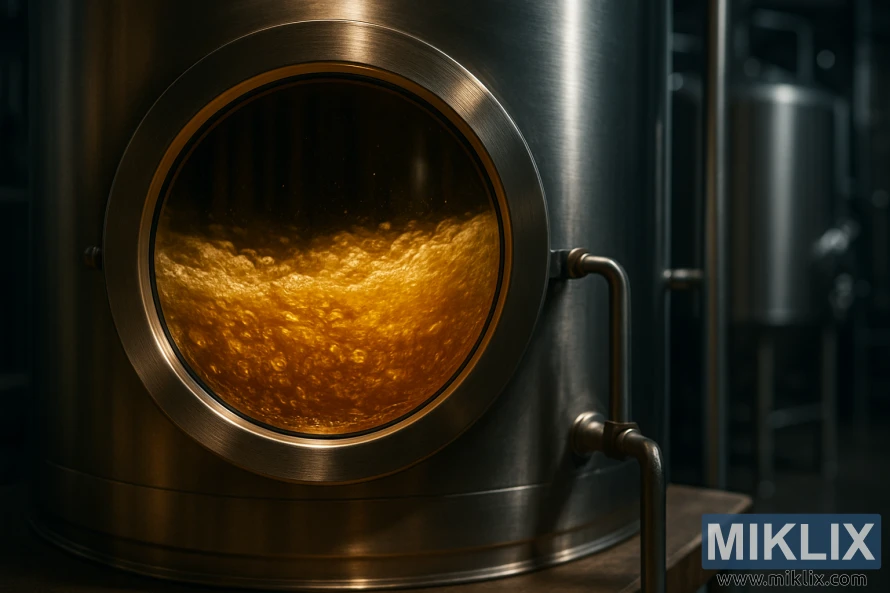
Performing a diacetyl rest with Wyeast 2206
A diacetyl rest with Wyeast 2206 aids yeast in reducing diacetyl produced during fermentation. Wyeast 2206 typically finishes clean with proper management. Yet, a brief lager diacetyl rest ensures against buttery off-flavors.
Initiate the rest after primary fermentation slows and most attenuation is achieved. When the specific gravity nears the expected final gravity or remains stable for 24 hours, elevate the fermenter to 65–68°F (18–20°C). Maintain this temperature for 48–72 hours to allow yeast to reabsorb diacetyl.
Here's a practical checklist for timing the diacetyl rest in a fast-lager schedule:
- Confirm apparent fermentation is mostly done and krausen has fallen.
- Increase temperature to 65–68°F and maintain it.
- Check flavor after 48 hours; extend to 72 hours if buttery notes persist.
In fast-lager methods, the ramp to 65–68°F may be part of a longer ramping plan. Hold until apparent fermentation is fully complete and off-notes fade. This period can range from 4–10 days, depending on yeast vigor and fermentation history.
Trust sensory checks or a simple diacetyl sniff and taste test over strict timers. If a buttery character remains, extend the rest instead of cold crashing too soon. Proper timing of the diacetyl rest keeps lagers clean and true to style without overworking the yeast.
Cold crash, lagering, and clarification options
When cold crashing with Wyeast 2206, aim for temperatures near freezing. Target 30–32°F (-1–0°C) and maintain this for 3–5 days or more. This process aids in yeast and protein flocculation, speeding up the clarity during lagering.
Many brewers prefer a gradual temperature decrease to avoid introducing air into the fermenter. A slow drop over 24–48 hours helps manage pressure shifts and minimizes oxidation risks. An immediate, aggressive drop can save time but increases the risk of oxidation.
For quicker clarity, gelatin fining at around 50°F (10°C) before the final cold crash is beneficial. Add gelatin, then wait 24–48 hours before cold crashing. This method shortens the time to serve kegs and bottles.
Kegging after gelatin fining allows for kegging within 24–48 hours. Many find the beer ready to drink after about five days in cold storage. These steps make lagering more predictable with Wyeast 2206.
Bottlers should first cold condition, then prime and bottle. Store bottles at 68–72°F for 2–3 weeks to carbonate. Afterward, refrigerate for at least five days to enhance bottle lager clarity.
- Cold crash Wyeast 2206: 30–32°F for 3–5+ days to drop yeast and proteins.
- Lagering: extended cold storage after crash to polish flavors and clarity.
- Gelatin fining: dose at ~50°F before final crash to speed clearing.
- Bottling note: prime warm for carbonation, then bottle lager in cold for clarity.
Select clarity methods that align with your schedule and equipment. Gentle temperature control and a brief fining step can achieve clear, bright lagers without prolonged aging.
Repitching and harvesting Wyeast 2206 slurry
Harvesting slurry from a primary fermenter is a common practice among homebrewers. A brewer successfully repitched 2206 into an Oktoberfest using nearly pure slurry, containing about 400 billion cells. This highlights the effectiveness of using slurry for repitching.
Begin by racking beer off the trub before harvesting. This approach minimizes the risk of transferring heavy solids. Such solids can stress the culture during repitching.
Store the harvested slurry in cold conditions and use it within a few generations. Fresh cells are essential for yeast harvesting. Repeated use can lead to degeneration, reduced viability, and slower fermentation starts.
- Perform a simple wash or harvest to separate clean yeast from hop and protein debris.
- Keep sanitation strict during yeast harvesting to avoid contamination.
- Label jars with strain, date, and estimated cell count to track generations.
Repitch 2206 when viability and cell counts are known. Repitching reduces the need for fresh starters. Yet, do not assume old or stressed slurry will perform well. Low viability can extend lag time or introduce off-flavors.
- Cold crash and decant beer, leaving the yeast layer.
- Resuspend yeast in sterile water or wort, then let heavier trub settle.
- Pour off the clearer yeast slurry for storage or immediate pitching.
Monitor each generation for aroma, attenuation, and lag. If a batch shows sluggish fermentation or unexpected esters, discard that slurry. Make a fresh starter from a Wyeast smack pack or a laboratory strain purchase.
Maintaining good records and gentle handling extends the useful life of harvested yeast. This preserves the character you want when harvesting Wyeast 2206 slurry. It also ensures successful repitching for successive lagers.
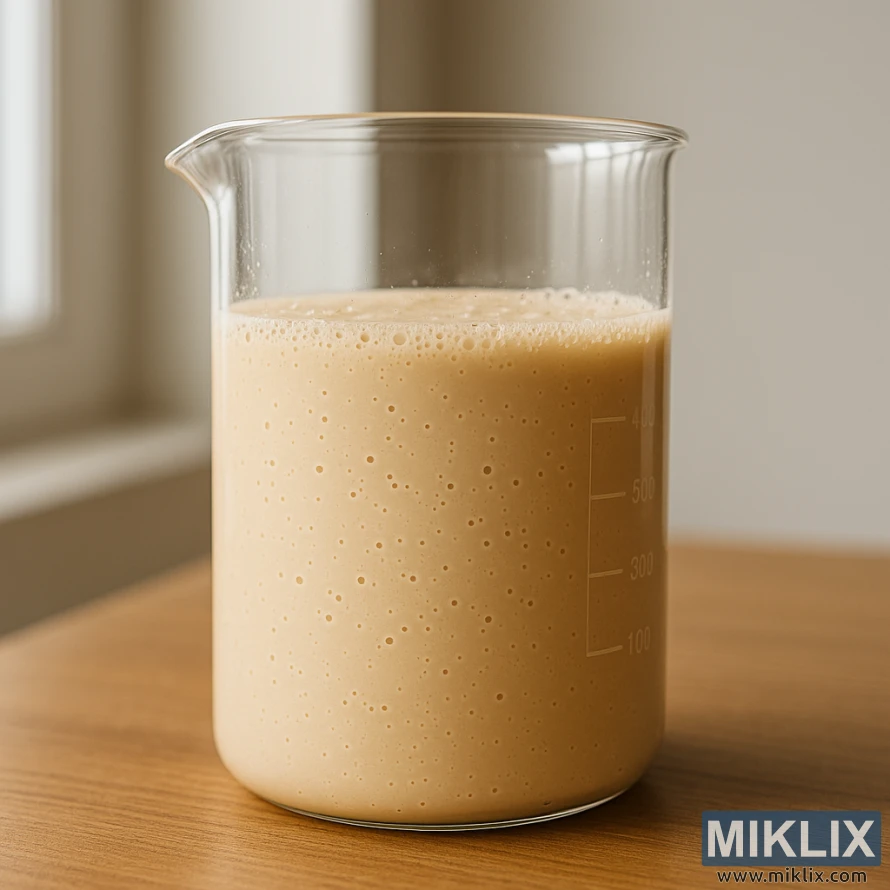
OG/FG expectations and attenuation behavior
Wyeast 2206 attenuation usually ranges from 73 to 77%. The final gravity (FG) you can expect depends on your beer's original gravity and mash efficiency. For a beer with an original gravity of 1.050 and average mash efficiency, the FG should be around 1.012 to 1.013. This is when Wyeast 2206 reaches its typical attenuation.
A brewer once reported an OG to FG drop from 1.052 to 1.012 in about seven days. This was with good pitching and stable lager temperatures. This example shows Wyeast 2206 can quickly reach good attenuation under the right fermentation conditions.
Beers with higher original gravities will ferment more slowly. They might finish at a slightly higher FG. If you're brewing large lagers, give them more time. Consider using a larger starter or a higher pitch rate to help achieve full attenuation.
Before making temperature changes or bottling or kegging, measure the specific gravity. This confirms stability. Use at least three days of identical readings to ensure the fermentation process is complete. This verifies that your expected FG has been reached.
- Typical attenuation: 73–77% (Wyeast 2206 attenuation)
- Example: 1.052 → 1.012 in ~7 days (OG to FG with 2206)
- High OG beers: slower finish, slightly higher expected FG
- Always verify stable readings before packaging
Oxygenation and nutrient needs for clean fermentation
Healthy yeast growth begins with adequate oxygenation for lagers at the pitching stage. Lagers ferment at cooler temperatures, which slows yeast activity. Ensuring lager oxygen requirements are met aids in building robust yeast cell walls. This supports a quick, vigorous start to fermentation.
Select an oxygenation method that aligns with your batch size. For 5-gallon batches, simple shaking or splashing can suffice if the wort is chilled and yeast is pitched immediately. For larger volumes, a hand pump with sterile air or a pure O2 system with a diffusion stone is necessary to achieve the desired dissolved oxygen levels.
The composition of the wort influences the need for yeast nutrient Wyeast 2206 or general nutrient blends. High original gravities, sugar-rich adjuncts, or concentrated wheats can deplete yeast of essential vitamins and minerals. Adding a measured yeast nutrient can prevent sluggish fermentation and off-flavor production.
Optimal oxygenation must be paired with correct pitching rates and starter practices. A healthy starter or an adequate pitch of Wyeast 2206 can shorten lag time and reduce cell stress. Stressed yeast tends to produce more diacetyl and sulfur compounds.
Watch for signs of oxygen or nutrient deficiency: prolonged lag, slow gravity drop, or unexpected sulfur notes. If these symptoms appear, consider gentle aeration early in active fermentation only when safe. Also, review your pitching plan for future batches to better meet lager oxygen requirements.
- For 1–5 gallon batches: vigorous shaking or aeration pre-pitch.
- For 5+ gallon batches: oxygen with a stone or pure O2 rig.
- For high OG or adjunct beers: dose yeast nutrient Wyeast 2206 or a balanced nutrient per manufacturer guidance.
Implementing these strategies equips Wyeast 2206 for clean fermentation. Adequate oxygenation for lagers, combined with targeted nutrient additions, supports a brisk, controlled fermentation. This results in a cleaner finished beer.
Avoiding and troubleshooting common off-flavors
Identify common off-flavors early on. Diacetyl, acetaldehyde, and fruity esters or phenolics are typical issues with Wyeast 2206. These can significantly alter the taste of your beer.
Diacetyl gives off a butter or butterscotch scent. Acetaldehyde has a green apple aroma. Excessive esters or phenolics can make your beer smell overly fruity or clove-like, often due to fermentation stress or high temperatures.
- If you notice diacetyl: increase the beer's temperature to 65–68°F (18–20°C) and hold it there until the off-flavor dissipates. This allows the yeast to reabsorb the compound.
- If fermentation is slow or stuck: check the oxygenation, pitch fresh, viable yeast or a starter/slurry, and add yeast nutrients. Proper cell counts and oxygen at yeast growth help avoid incomplete fermentations and acetaldehyde.
- If esters are too pronounced: confirm that fermentation temperatures stayed within the recommended range. Warm, rapid fermentations during growth amplify fruity esters.
Stick to lager brewing basics to avoid issues. Use accurate pitch rates, oxygenate the wort before pitching, and plan a diacetyl rest when fermentation nears completion.
- Verify gravity decline to ensure fermentation is finishing.
- Perform diacetyl troubleshooting when a buttery note appears.
- Correct temperature and pitch issues to resolve sluggish activity.
Pay close attention during early growth and the cleanup phase to achieve a clean lager profile. These fixes for lager off-flavors ensure Wyeast 2206 beers remain true to style, reducing the need for rework.
Fermenting specific styles with this strain
Wyeast 2206 excels in traditional Bavarian lager styles, requiring a strong malt backbone and a clean finish. It's a top choice for Doppelbock and Eisbock. Its solid attenuation and malt-forward character create a rich, full mouthfeel. This enhances dark sugar and toffee notes without overpowering them.
Maibock and Helles Bock also benefit from this yeast. Its medium-high flocculation ensures these lighter bocks clear well. This preserves a gentle malt sweetness, characteristic of the style.
Munich Dunkel and Oktoberfest/Märzen are well-suited for 2206. It keeps roast and bread crust flavors rounded and natural. Schwarzbier and Classic Rauchbier gain from its clean ester profile. This allows roasted and smoked malts to remain the focus.
List of strong matches for 2206 styles:
- Doppelbock
- Eisbock
- Maibock / Helles Bock
- Munich Dunkel
- Oktoberfest / Märzen
- Schwarzbier
- Classic Rauchbier
- Traditional Bock
Homebrewers often use Wyeast 2206 in hybrid lagers and seasonal beers. It provides a sturdy, malty backbone and a clean profile. This yeast supports malt complexity while staying unobtrusive in hop-forward hybrids.
Caution is advised with very high OG beers. For big bocks and eisbocks, extended primary time and adequate pitching rates plus nutrients are essential. These steps reduce yeast stress and lower the risk of stuck fermentations in brewing heavier Bavarian lager styles.
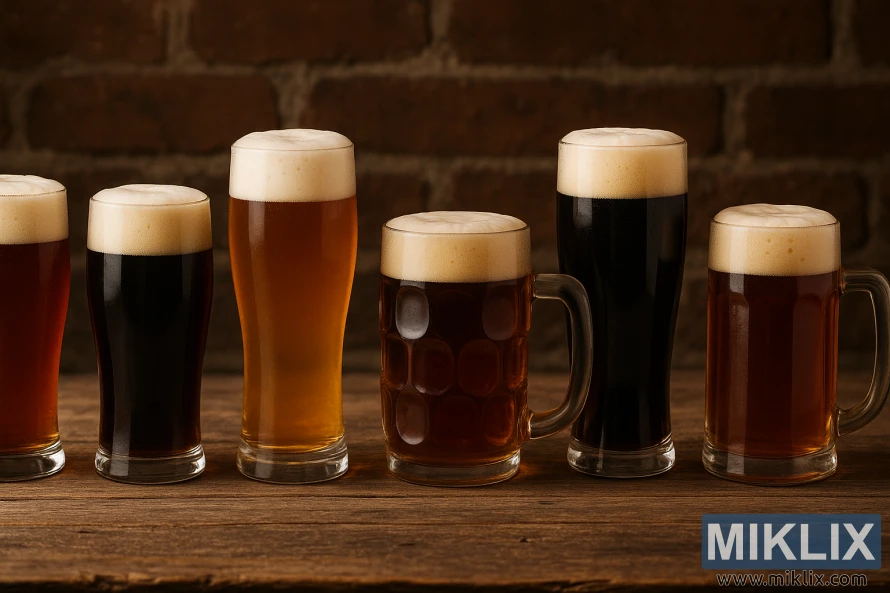
Equipment and temperature control setup for homebrewers
Effective lager temperature control begins with the right equipment. Homebrewers often repurpose a refrigerator or freezer, complemented by a controller like Inkbird or Johnson. This setup ensures consistent temperatures throughout the brewing process, from pitching to lagering.
For smaller batches, a homebrew cooler with frozen water bottles can suffice for brief temperature holds. For consistent results, opt for a controller that can heat and cool, accepting an external probe. Include an accurate thermometer probe to monitor temperatures directly.
Pitching between 48–53°F (9–12°C) is ideal for Wyeast 2206. Set the controller to gradually increase to 65–68°F (18–20°C) for the diacetyl rest. After conditioning, lower temperatures to near-freezing for lagering at 30–32°F (-1–0°C). This precise temperature control allows for a fast-lager schedule, reducing aging times.
Oxygenation equipment, like an O2 kit and stone, is beneficial for larger or higher-gravity batches. It aids yeast in starting strong. Chill the wort thoroughly before pitching to minimize infection risk and ensure yeast performance. Sanitize all probe ports and fittings to further reduce contamination risks.
- Essentials: controller (Inkbird or Johnson), external probe, reliable fridge/freezer conversion.
- Optional: O2 kit, stainless probe clip, insulated fermentation blanket for winter brewing.
- Low-cost option: homebrew cooler setup with ice packs and a digital thermometer for short holds.
Document your temperature curves and observe how your fermentation chamber setup reacts to door openings and ambient changes. Small tweaks to probe placement or fermenter positioning can significantly enhance stability and yield cleaner lager profiles.
Brewer experiences and community notes on using 2206
Wyeast 2206 reviews frequently emphasize patience as a critical factor. Many homebrewers note longer lag times when fermenting at the lower end of the temperature range. This pattern is evident in brewer experiences 2206 across various forums and local clubs.
Community notes on 2206 highlight consistent performance when the yeast is handled with care. Several brewers report achieving the best results by pitching at 48–50°F and allowing 24 hours for yeast activity. This method reduces stress and promotes a steady fermentation curve.
Practical anecdotes set realistic expectations. One homebrewer used Wyeast 2206 for a California Common with an OG of 1.052. They pitched a 1 L starter and maintained the wort at about 62°F. Visible activity was delayed, then accelerated, reaching an FG near 1.012 in roughly seven days.
Another account describes using harvested slurry—roughly 400 billion cells—into an Oktoberfest batch. This brewer experienced a strong, even fermentation and clean malt character. Such cases are common in Wyeast 2206 reviews and brewer experiences 2206 threads.
The consensus among experienced lager brewers is clear. Lager strains ferment slower and steadier than ale strains. Expect up to 72 hours before visible activity becomes apparent. Many community notes on 2206 stress that early worry can lead to unnecessary repitching or overfeeding.
Key factors for success recur in reports. Proper pitch rates, adequate oxygenation, and a planned diacetyl rest often yield the best flavor results. Brewers using Wyeast 2206 reviews praise its ability to produce clean, malt-forward lagers and hybrid styles when given these basics.
Summaries from homebrew clubs and online groups encourage methodical practice. Track starter size, cell counts, and temperature control. Compare outcomes over a few batches to learn the strain’s tendencies. Brewer experiences 2206 shared in tasting notes tend to favor malty German lagers and clean alternatives to ale strains.
Community notes on 2206 remain valuable for new brewers. Read multiple Wyeast 2206 reviews and log your own data. This habit improves predictability and helps match fermentation strategy to the beer you want to brew.
Conclusion
Wyeast 2206 Bavarian Lager Yeast stands out for homebrewers aiming at traditional German lagers. This yeast exhibits a 73–77% attenuation rate, medium-high flocculation, and ferments best between 46–58°F (8–14°C). It's ideal for styles like bocks and dunkels, where clean malt flavors are essential.
To achieve the best outcomes, adhere to the recommended practices for Wyeast 2206. Start with a well-sized starter or slurry, ensure proper wort oxygenation, and anticipate a 24–72 hour lag phase. Implement a diacetyl rest at 65–68°F, followed by controlled temperature ramps and a cold crash or extended lagering. This will enhance clarity and smoothness. Keep an eye on specific gravity to gauge fermentation progress, if you're on a faster schedule.
In summary, the Wyeast 2206 Bavarian Lager Yeast is highly recommended. With diligent temperature management and careful attention to pitching rates and nutrient additions, it produces authentic, full-bodied flavors in malt-focused lagers. Even seasoned brewers can fine-tune fermentation times while maintaining clean results by monitoring specific gravity and yeast activity.
Further Reading
If you enjoyed this post, you may also like these suggestions:
- Fermenting Beer with White Labs WLP500 Monastery Ale Yeast
- Fermenting Beer with White Labs WLP006 Bedford British Ale Yeast
- Fermenting Beer with Bulldog B5 American West Yeast
